 |
 |
 |
| |
Initiating Protease Inhibitor-only therapy is associated with increased subcutaneous adipose tissue PPARG expression, reduced mitochondrial stress together with altered expression of insulin signalling genes
|
| |
| |
Reported by Jules Levin
16th International Workshop on Co-morbidities and Adverse Drug Reactions in HIV 6 October 2014, Philadelphia USA
RT Maughan1, ER Feeney1, E Capel2, J Capeau2, P Domingo3, F Villarroya4, JMA Lange5,6, P Phanuphak6,7, DA Cooper8, P Reiss5,6, PWG Mallon1
On behalf of the NECATT and HIVNAT019 study groups
1HIV Molecular Research Group, School of Medicine and Medical Science, University College Dublin, Ireland, 2University Paris 6, INSERM UMRS 938, Paris, France,3Hospital de la Santa Creu/Sant Pau, Barcelona, Spain, 4Universitat de Barcelona, Barcelona, Spain, 5Academic Medical Center, Department of Global Health and Division of Infectious Diseases, Amsterdam, Netherlands, 6The HIV-Netherlands Australia Thailand Research Collaboration (HIV-NAT) - Thai Red Cross Aids Research Center (TRCARC), Bangkok, Thailand, 7Chulalongkorn University, Bangkok, Thailand, 8Kirby Institute, University of New South Wales, Sydney, Australia, Deceased July 17th 2014

Program abstract:
Initiating protease-inhibitor-only therapy is associated with increased subcutaneous adipose tissue PPARG expression, reduced mitochondrial stress together with altered expression of insulin signaling genes
RT Maughan1, ER Feeney1, E Capel2, J Capeau2, P Domingo3, F Villarroya4, JMA Lange5,6#, P Phanuphak6,7, DA Cooper8, P Reiss5,6, PWG Mallon1
1HIV Molecular Research Group, School of Medicine and Medical Science, University College Dublin, Ireland; 2University Paris 6, INSERM UMRS 938, Paris, France; 3Hospital de la Santa Creu/ Sant Pau, Barcelona, Spain; 4Universitat de Barcelona, Barcelona, Spain; 5Academic Medical Center, Department of Global Health and Division of Infectious Diseases, Amsterdam, the Netherlands; 6The HIV-Netherlands Australia Thailand Research Collaboration (HIV-NAT) - Thai Red Cross AIDS Research Center (TRCARC), Bangkok, Thailand; 7Chulalongkorn University, Bangkok, Thailand; 8Kirby Institute, University of New South Wales, Sydney, Australia #Deceased 17th July 2014
Objectives: Decreased expression of key transcription factors; PPARG and SREBF1 as well as inhibited glucose uptake in adipocytes have been proposed as mechanisms of HIV protease inhibitor (PI)-associated adipose tissue toxicity and insulin resistance. However, few studies have examined the effect of PIs in isolation on adipose tissue function in HIV-positive patients. We assessed expression of genes related to insulin signalling, lipid metabolism and mitochondrial function in the subcutaneous adipose tissue (SAT) of HIV patients initiating PI-only therapy.
Methods: In the HIVNAT 019 study, Thai antiretroviral-naive adults commenced antiretroviral therapy (ART) comprising lopinavir/ritonavir/saquinavir taken twice daily. Subjects underwent flank SAT biopsies at weeks 0, 2 and 24. Using quantitative PCR arrays, changes in the expression of 56 genes related to insulin signalling, lipid metabolism and mitochondrial function were measured. Differentially expressed (DE) genes from baseline were identified by Wilcoxon signed-rank test (P≤0.05).
Results: Samples from 15 subjects contributed to gene expression analysis: 47% male, median age 35 (30.3-43.7), BMI 21.5 (18.7-23.3), CD4 125 cells/ml (87-251), log viral load 4.8 (4.5-5.1). 13 and 3 DE genes were identified in the baseline vs week 2 and baseline vs week 24 comparisons, respectively. 4 DE genes were identified within the 14 targets related to insulin signaling. These changes indicated an inhibitory effect of PIs on SAT insulin signalling with week 2 decreases in AKT2 and IGF2, involved in insulin signal transduction. Additionally, increases in PTPN1 and FOXO1, negative insulin signalling regulators were detected at week 24. 4 of 11 lipid metabolism and adipogenesis targets were significantly increased at week 2, including increases in PPARG and two of its transcriptional targets LPL and FABP4. Of 4 mitochondrial targets, NRF1 and CRTC3 were down-regulated at week 2 indicating a potential reduction in mitochondrial stress with PI initiation. See Table 1.
Conclusions: This is the first study to demonstrate that initiating PI therapy in HIV infection leads to increased PPARG expression in SAT, suggesting increased adipogenesis. Expression changes observed in genes of the insulin signalling pathway indicate a down regulation of insulin signalling. Decreases in NRF1 and CRTC3 suggest a potential recovery from mitochondrial stress in ART-naive patients with initiation of PI-only ART. The clinical significance of these changes remains to be elucidated.
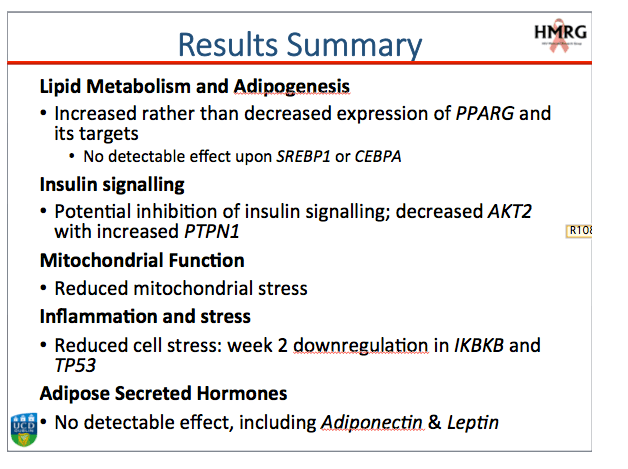
http://en.wikipedia.org/wiki/Adipogenesis........Adipogenesis is the process of cell differentiation by which preadipocytes become adipocytes.[1] Adipogenesis has been one of the most intensively studied models of cellular differentiation......The key features of differentiated adipocytes are morphological change, growth arrest, high expression of lipogenic genes and production of hormones like leptin, resistin (in the mouse, not in humans) and TNF-alpha.
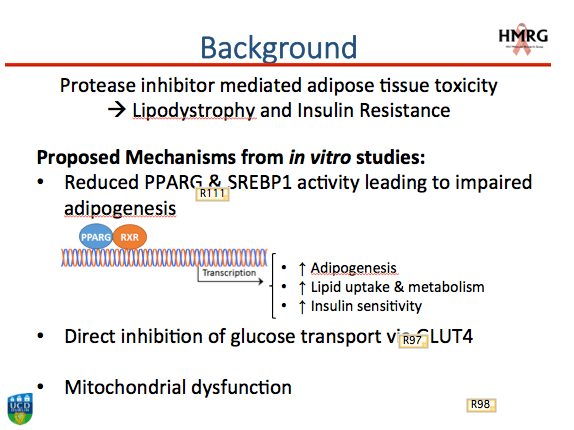
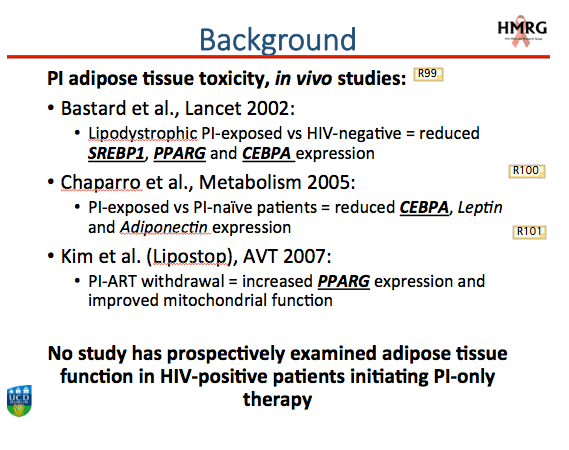
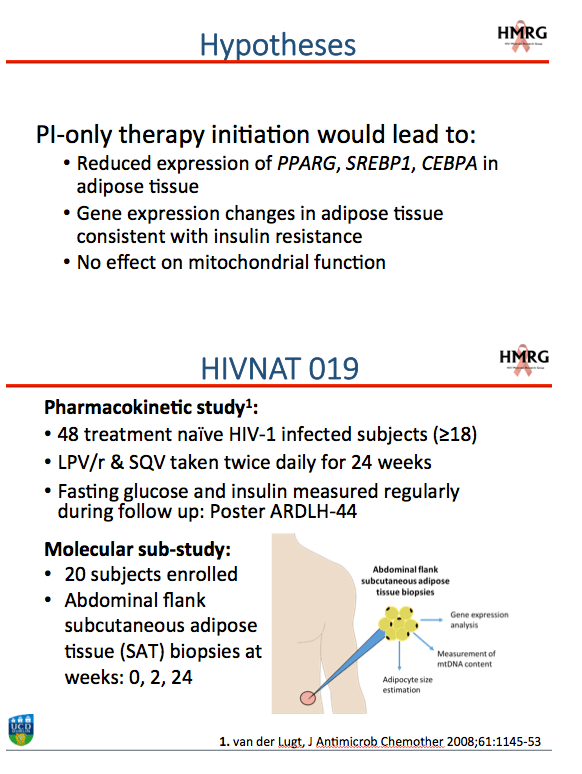
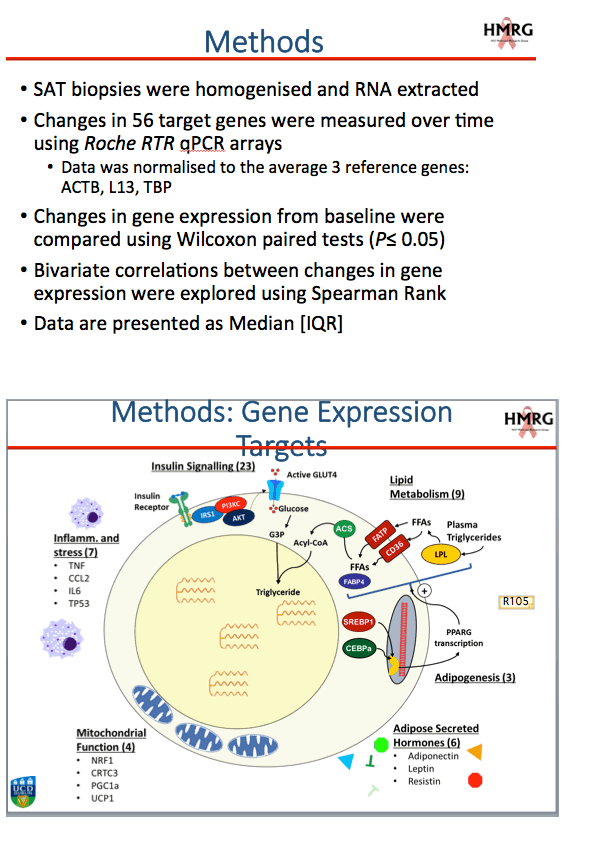
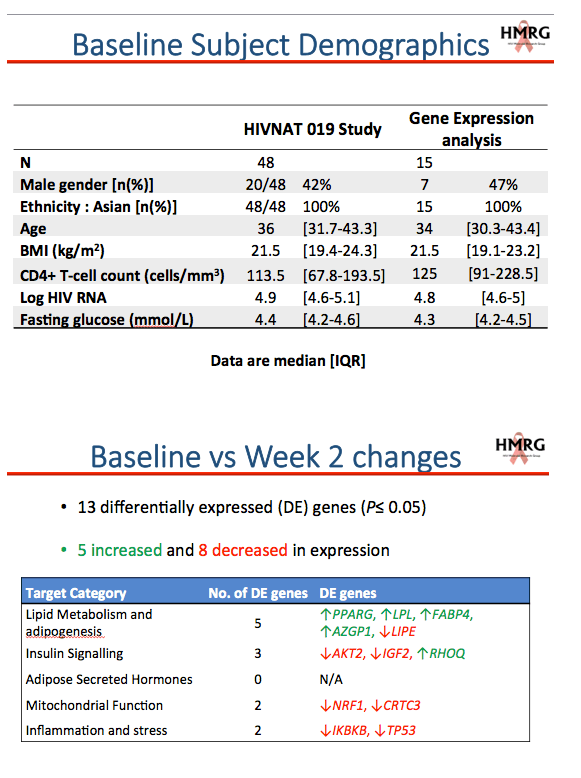
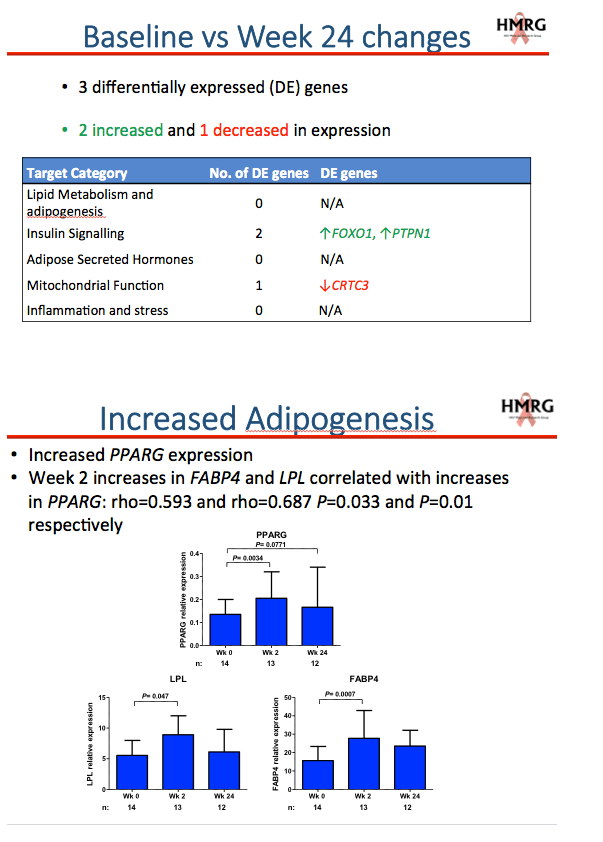
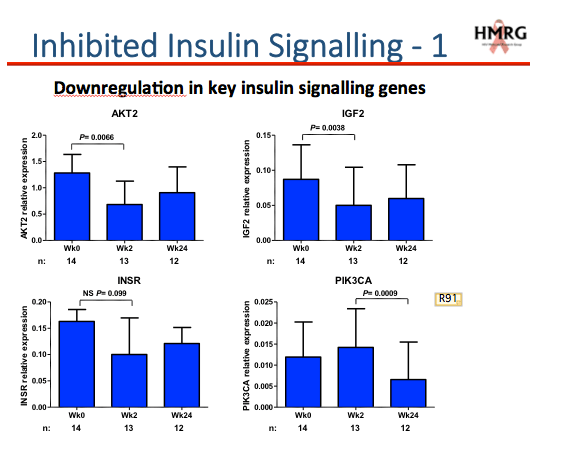

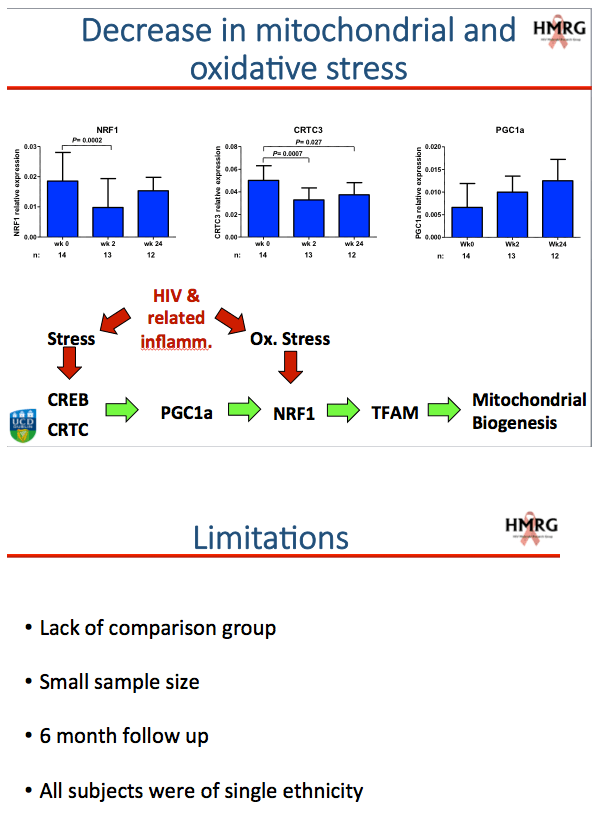
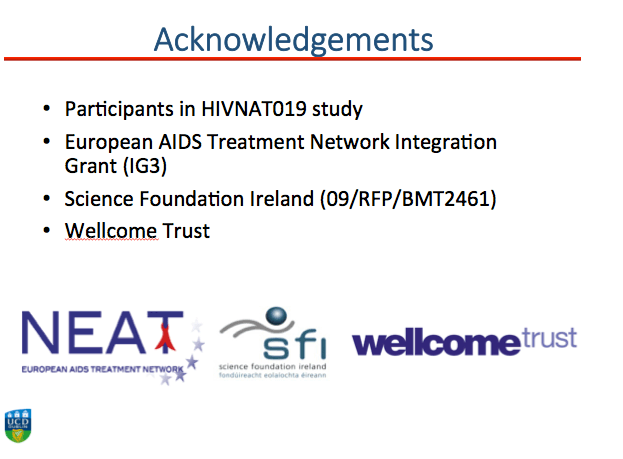
|
| |
|
 |
 |
|
|